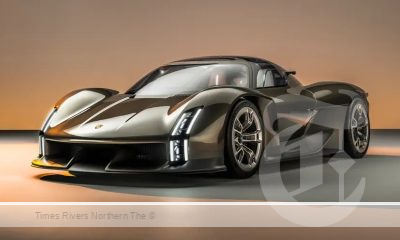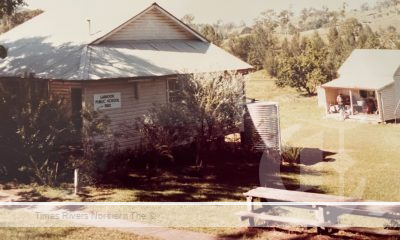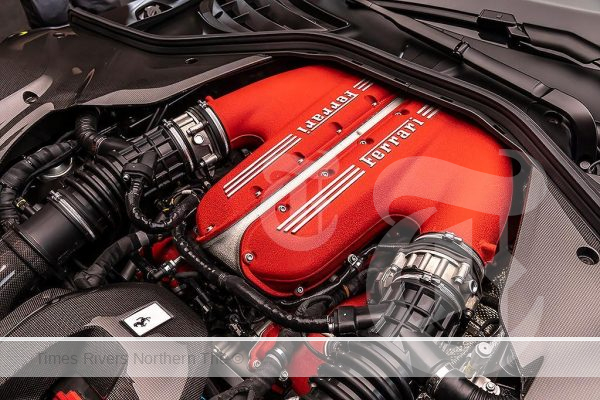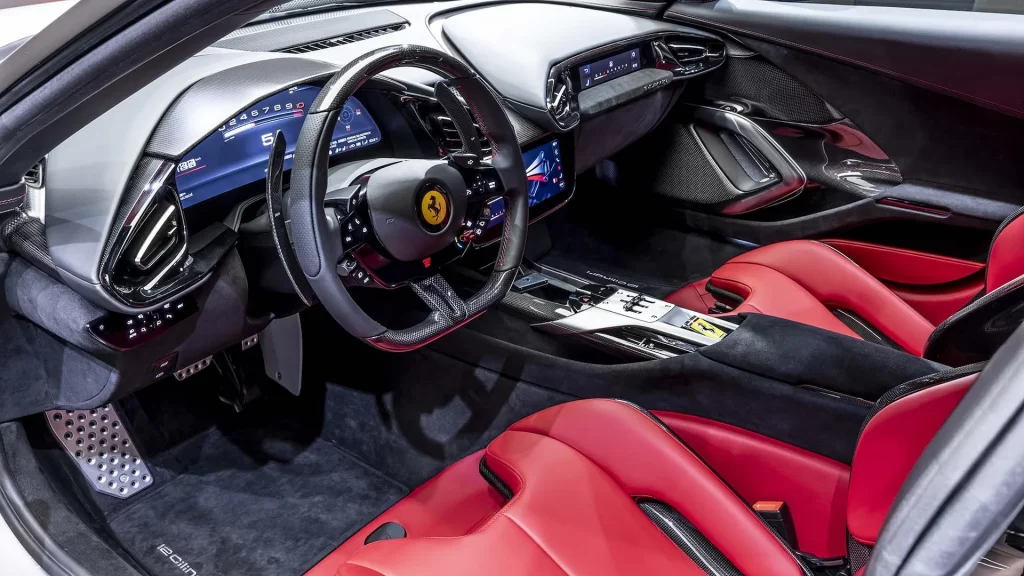2021 PORSCHE TAYCAN TURBO S
By EWAN KENNEDY
BODY COPY
The German car makers are all very serious about the need to lower the emissions of greenhouse gases, so are working hard on reducing them by designing electric vehicles. As a high-performance marque Porsche is one of the leaders in the field.
Hence the introduction of the all-electric Taycan high-performance sedan – yes sedan, this is a four-door family car, not a two-door coupe.
Porsche tells us the name Taycan is composed of two terms of Turkic origin and can be roughly translated as “soul of a spirited young horse.” Porsche tells us its first fully-electric model will be: “lively, impetuous, vigorous, light-footed on long stretches without tiring, and free-spirited.”
Advertisements

Okay, this may sound like a bit of over-blown waffle to we down-to-earth Aussies, but once we drove it, we did tend to agree with the way the Porsche Taycan felt. See our comments on this in the Driving segment of this report.
STYLING
Taycan looks slightly odd at the front to my eyes, with its slightly bulbous “bonnet” and the vertical lines beside the headlights. Beauty is of course in the eyes of the beholder and others may love it.
I reckon the rear is much better from a styling point of view, with a swooping coupe-like tail and a large black sunroof which merges beautifully with the black glass of the rear window.
INTERIOR
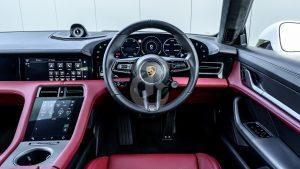
2021 PORSCHE TAYCAN TURBO S Interior
There’s a very wide dash array, with three screens. The one in front of the driver is large and contains plenty of information on the Taycan’s state of play. The centre screen gives access to numerous features, including speed, current power consumption, distance to empty, navigation and temperature control.
The left screen is in front of the passenger and lets them keep an eye on the map to assist with navigation.
There more space inside than you might expect, partly due to the fact that it’s almost five metres long. There’s seating for four and those in the back won’t have to ask those in front of them to give up any of their space. However, tall people in the back might brush against the roof.
The front seats are heated and cooled and are nicely shaped to support without being too aggressive.
INFOTAINMENT
A 14-speaker Bose audio provides excellent output and we found it easy to adjust it to our preferences.
POWERTRAIN
There are two electric motors one at the front the other at the rear. The front has a 175kW/400Nm on the Turbo S, the rear provides up to 335kW and 550Nm when it’s over boosted to give even more grunt.
The range of the Turbo S is rated as 390 to 416 kilometres by Worldwide Harmonised Light Vehicles Test Procedure.
As a strong selling point the Taycan in Australia is that it comes with a free three-year Chargefox subscription.
SAFETY
Porsche Taycan was awarded a five-star safety rating by Euro NCAP in 2019.
DRIVING

2021 PORSCHE TAYCAN TURBO S Interior
We have always enjoyed the way electric powered vehicles leap off the line and have tremendous torque – but the Taycan is something else again. Zero to 100 km/h in 2.5 seconds!
The first time I did it my head was thumped back into the headrest and my neck felt strained. I didn’t make that mistake again, making sure it was against the headrest – thereby avoiding the neck strain and enjoying to the full the dragster-like performance.
Back when I was a young fella road testing high-performance cars in the 1970s anything under six seconds to 60mph (97 km/h) and quicker than 15 seconds for the quarter mile was the goal. And that need a large hot V8.
This electric Porsche is well under three seconds to 100 km/h, and single figures for the quarter mile. How times have changed.
On the road Taycan has clever electronics to assist cornering by feeding just the right torque front and rear and side to side. You can feel it happening but we didn’t have access to a race track to test it to the limits. Maybe some other time…
Comfort is good for a high-performance car and keep in mind that this is a four-door sedan not a two-door sports coupe. On some surfaces there a fair bit of tyre noise, on others it’s as peaceful as any upmarket mid-size luxury vehicle.
THE FIRST PORSCHE ELECTRIC CAR

Egger-Lohner C.2 Phaeton
The Taycan isn’t the first Porsche electric car. In 1898 Ferdinand Porsche designed the Egger-Lohner C.2 Phaeton. The vehicle was powered by an octagonal electric motor with three to five horsepower. It had a top speed of 25 km/h.
AT A GLANCE
MODEL RANGE
Taycan RWD sedan: $156,300
Taycan 4S AWD sedan: $194,700
Taycan Turbo AWD sedan: $276,300
Taycan Turbo S AWD sedan: $345,800
Taycan Cross 4 Turismo: $176,600
Taycan Cross 4S Turismo: $205,300
Taycan Cross Turbo Turismo: $279,000
Note: These prices do not include government or dealer delivery charges. Contact your local Porsche dealer for drive-away prices.
SPECIFICATIONS (Porsche Taycan electric four-door sedan)
ENGINE:
Capacity: Not applicable
Configuration: Not applicable
Maximum Power: 560 kW
Maximum Torque: 1050 Nm
Fuel Type: Not applicable
Combined Fuel Cycle (ADR 81/02): L/100km
CO2 Emissions: g/km
DRIVELINE: Two-speed automatic
DIMENSIONS, WEIGHT AND CAPACITIES:
Length: 4963 mm
Wheelbase: 2900 mm
Width: 1966 mm
Height: 1378 mm
Turning Circle: Not supplied
Kerb Mass: 2295 kg
Fuel Tank Capacity: Not applicable litres
BRAKES:
Front: Ventilated disc
Rear: Ventilated disc
STANDARD WARRANTY:
Three years / unlimited kilometres
RATINGS
Looks: 7/10
Performance: 10/10
Safety: 9/10
Thirst : 6/10 **
Practicality: 8/10
Comfort: 8/10
Tech: 9/10
Value: 7/10
** Note that we have rated Thirst low because its range is well under that of a conventional car.
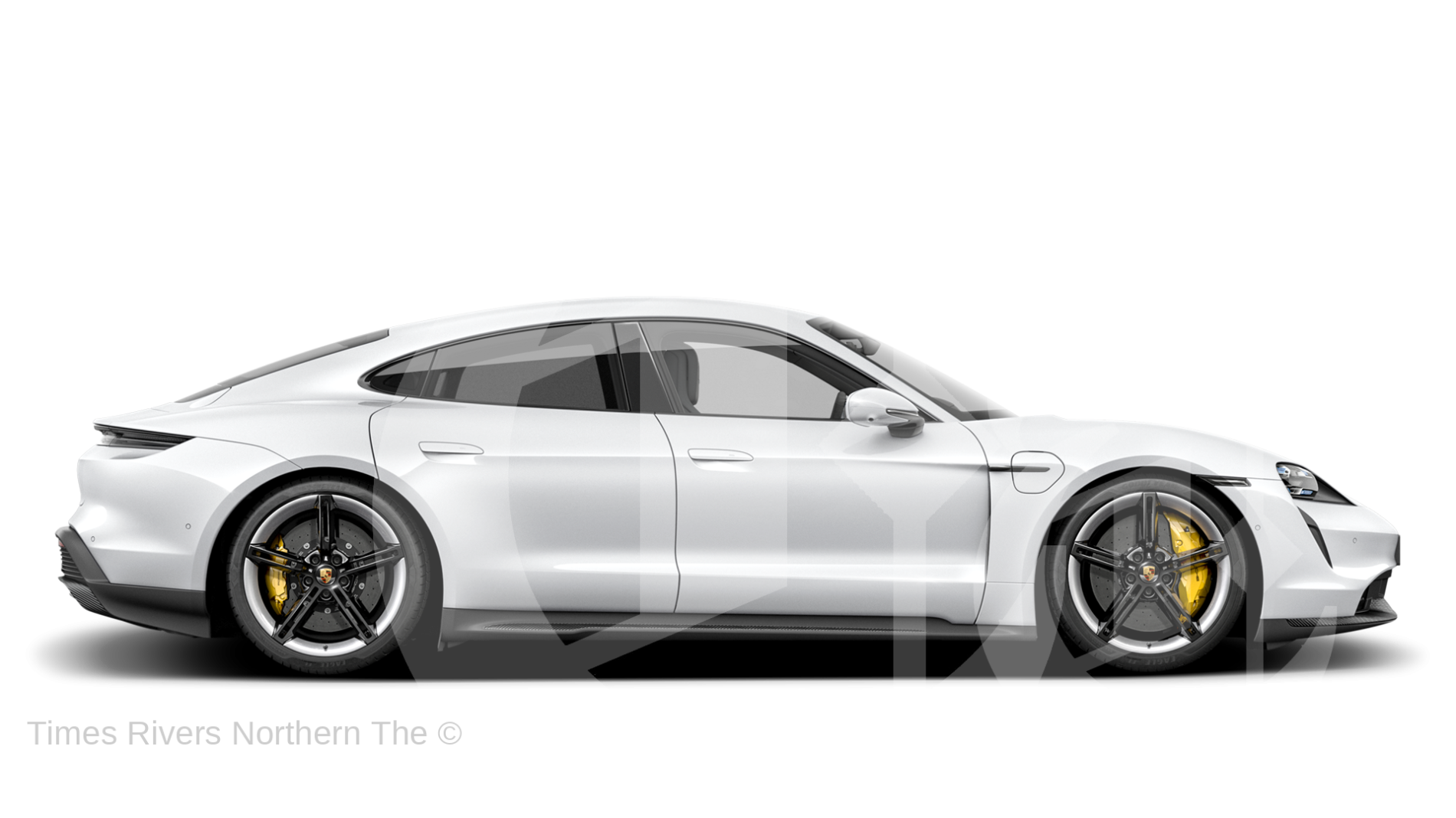

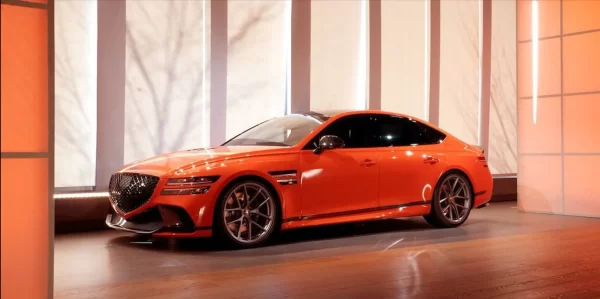


 Tweed Shire News2 years ago
Tweed Shire News2 years ago
 Motoring News1 year ago
Motoring News1 year ago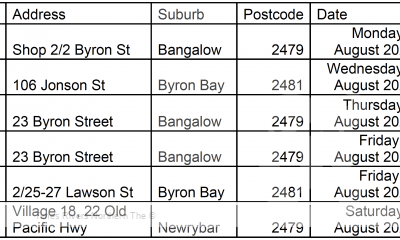
 COVID-19 Northern Rivers News3 years ago
COVID-19 Northern Rivers News3 years ago
 COVID-19 Northern Rivers News3 years ago
COVID-19 Northern Rivers News3 years ago
 Northern Rivers Local News3 years ago
Northern Rivers Local News3 years ago
 Health News3 years ago
Health News3 years ago
 COVID-19 Northern Rivers News3 years ago
COVID-19 Northern Rivers News3 years ago
 NSW Breaking News3 years ago
NSW Breaking News3 years ago












